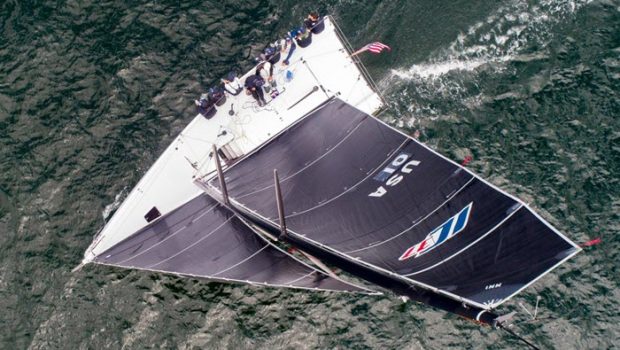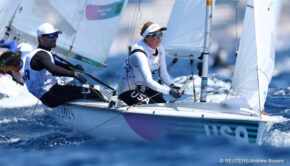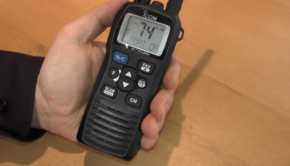Much-maligned runners have their advantages
Published on January 4th, 2022
by Nick Hayes, Sailing magazine
Our local fleet champ recently declared that he’s done with sailing.
“This is it,” he said. “When this sailboat sells I’m not buying another. Runabouts don’t have runners.” He’s a terrific sailor and we’d be sad to lose him to the dark side, but his frustration is understandable.
His boat, a sporty and light 30-footer designed to surf downwind, nearly lost its rig when a running backstay was caught mid-maneuver during a heavy-air race. For a few minutes, the entire fleet paused to watch as the sharply inverted rig—looking more like a boomerang than a mast—was brought back into column. Why it didn’t snap remains a mystery but for the quick response of the veteran team.
The running backstay was a compromise designed to pick up the structural slack when fractional rigs became popular with racers, leaving the tops of rigs unsupported. (Masthead rigs generally don’t require runner support and cruisers prefer simpler systems.) On boats with runners, the backstay bends the rig and the runners and checkstays control rake, headstay tension and support a bendier, lighter-weight rig.
While trimmers appreciate the sail shape benefits and helmsmen like the higher pointing that runners are said to enable, the rest of a sailing team usually frets about them. How long will it take before one of those loose shrouds gets fouled on a tack or jibe and the boom fetches up on it, potentially causing the rig to come down? For some teams, runners are a lightning rod of controversy and displeasure.
On many racing sailboats you’ll hear the announcement “Tacking!” followed by “Who’s got the runners?” Followed by “(Insert four letter word), now we’re not tacking! Looks like we’re banging a corner now.” – Full report









 We’ll keep your information safe.
We’ll keep your information safe.